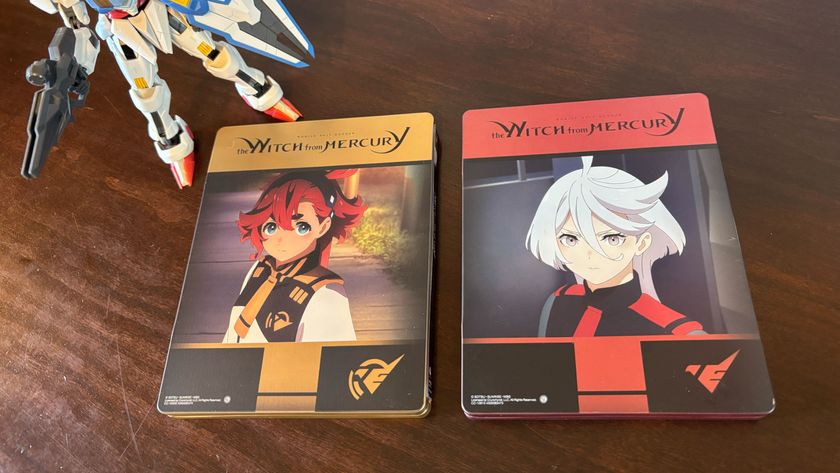Odin, Valhalla, and the real Norse myths behind Valheim's 3 million player strong success
Why weird dwarfs, thoughtful ravens, and cloaked figures feature into Valheim’s popular appeal
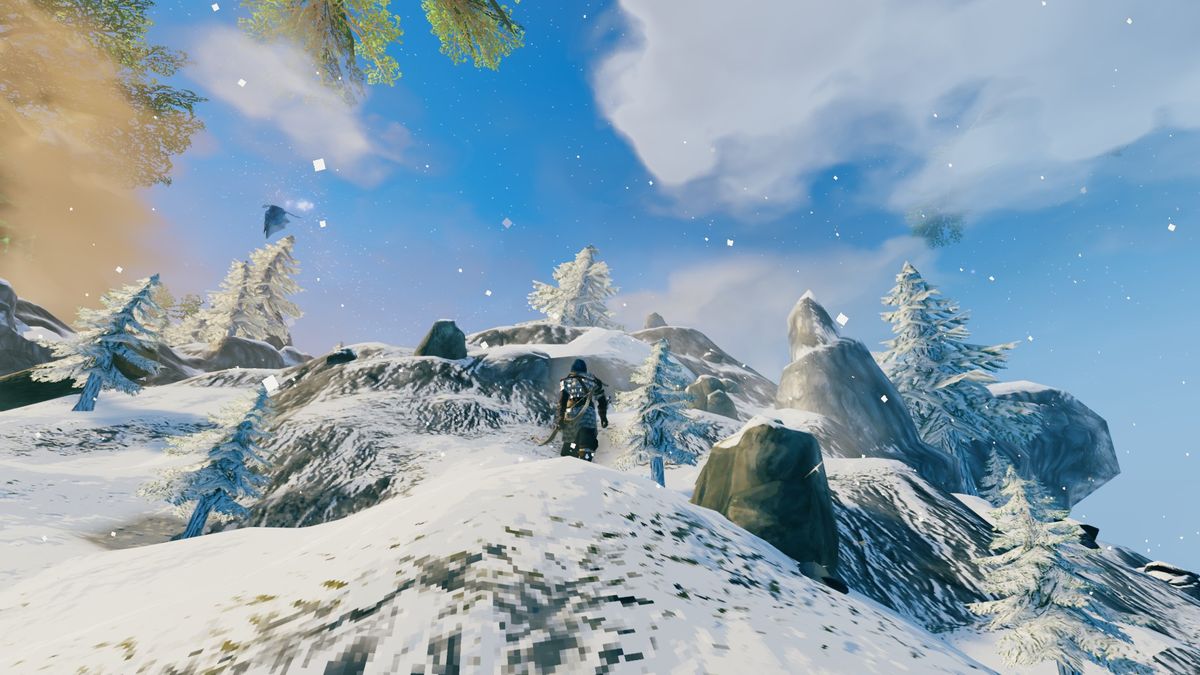
The last time I played Valheim, my poor Viking spent a solid half-hour running up and down a mountain in nothing but underwear to retrieve his dropped equipment. While he leapt and dodged past packs of angry wolves, a man in a hooded cloak stood and watched. I wonder if he enjoyed the show.
Valheim is the latest early-access indie success to hit PC, having just hit over 3 million players on Steam after a scant few weeks of release. The game brings a heady mix of intricate survival mechanics, lo-fi textures blended with beautiful lighting, and a deep fascination with ancient Norse imagery. There are, however, a huge array of different survival games released every day on PC. Why did this one rise to such prominence when countless others fail? What Valheim manages to do is create a believable world soaked in myth, drawing on obscure legends to build up its unique environment and mechanics.
This reliance on ancient, often misunderstood mythology grants the game a layer of mystique and intrigue missing from other genre titles. It's easy to be drawn in by Valheim’s mysterious cloaked figures, epic battles with giant trolls, and the grasping branches of the World Tree in the sky. Perhaps you have found yourself looking at the mind-blowing numbers this tiny game is doing. Maybe you are a Valheim player, wondering why you’re being stalked by a one-eyed man in a cloak. There are explanations for all these questions, and so many more, when we look at the way Valheim ties Norse myth into its very core.
Hu dis?
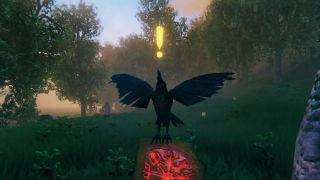
Hugin, the Raven, is the first character you ever interact with in Valheim. They are a talking raven that appears whenever a player reaches a new milestone or mechanic to offer a brief, if sometimes cryptic, explanation of what is going on.
Guiding companions are an often-infamous feature of certain games. The cries of “Hey, listen!” are seared into childhood memories worldwide, and not in a good way. Valheim streamline the worst parts of the games it draws on, and its treatment of the talking companion trope is no different.
Creating this interesting version of a maligned NPC convention is made easier by Hugin’s prominence in Norse mythology. In the Edda, an account of Old Norse myth, Hugin appears as both a raven and the embodiment of thought itself. According to the Edda, there are several Norse names for a raven, including: Hugin, early-flie, year-counter, and flesh-marker.
While Valheim has yet to show us Hugin’s flesh-marking ability in battle, the other similarities to the myth are obvious. The bird appears just before you go into battle with a new boss, or find a new dungeon type or biome, and then flies away before the event itself. Hugin also marks your achievements, serving as a year-counter of your various feats throughout the game.
Sign up to the 12DOVE Newsletter
Weekly digests, tales from the communities you love, and more
Size matters not
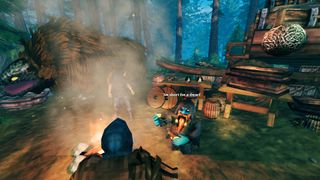
Far from the stout and jovial ale chuggers of classic fairy tales, Valheim’s dwarfs and Duergar are a force to be reckoned with. Valheim sticks to the mythological roots of the dwarfs. In the Norse literature, Duergar are subterranean nocturnal beings that are pitch black in colour, possibly undead and deeply protective of their precious metals. In the game, you encounter these tougher dwarfs in the swamp biome, guarding crypts containing iron that is essential to game progression.
It actually seems Valheim’s less deadly dwarfs are based on an English folktale, the Simonside Dwarfs. They were described in the Morpeth Gazette of 1889 as being short, dressed in rough animal skin clothing and being covered in moss, which sounds an awful lot like Valheim’s greylings.
Throughout the game you also meet a dwarf who wants to trade, not fight. Haldor sells you numerous items of legendary dwarven craftsmanship, all of which appear in the Norse legends of old. This includes belts of dwarven strength, and the flesh of the frost giant Ymir. In Valheim, these are used to craft endgame weaponry, but in the Norse tales of old the dwarfs were birthed from the flesh of Ymir after his defeat by Odin, which makes you wonder just how Haldor acquired it in the first place.
All told, the use of these different mythological sources gives what would be an annoying early game enemy a sense of magic and intention. While acting as a great way of naturally scaling difficulty between the biomes, there is also a sense of hierarchy and history to Valheim’s dwarfs. This little detail lends a further level of Viking verisimilitude, offering a genuine reason for why some creatures dwell in certain parts of the environment.
Immortal onlookers
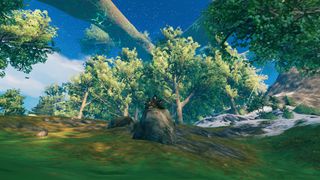
A recent in-game event noticed by players caused a significant stir among Valheim’s player base. As I mentioned earlier when recounting my Viking’s shirtless antics, I was watched by a silent, standing figure in a dark cloak with one blinking sapphire eye. Valheim’s hooded figure is not, as some may suggest, the Grim Reaper. It is more likely to be the god of heroes, poems, warfare, and death himself, Odin. Odin appears throughout many Norse tales watching the valorous deeds of his heroes to assess their worth (and ability to jump up mountains in shorts, apparently).
In Valheim, you play a Viking fallen in combat, transported to one of the outer realms of the Norse afterlife. You are carried there by a black winged and beaked Valraven, an ancient Danish version of the more familiar Valkyrie. These spirits retrieve the fallen warriors who have impressed Odin enough to be honoured in death. Classic Norse mythology calls these figures the Einheriar. This is roughly translated as “Odin’s Unique Warriors” or “Chosen Warriors”, and once they had proved themselves enough, they could move on to the halls of Valhalla. Players seem to be reporting this cloaked move closer and closer every time they see him. Could Odin be moving closer with every accomplishment? Or is he just there, watching, waiting?
These questions float around the Valheim community, with much speculation as to the exact nature of his appearances. Speculation like this, the intrigue born from incorporating Norse myths directly into game mechanics, keeps pushing players deeper and deeper into Valheim’s surprisingly robust systems. Thanks to the early-access nature of the game, it almost feels as if the mythology of the game is living, adapting to the questions and actions of its three million Vikings. In a sense, it is, as the five-person development team already has plans for more content. This includes a “Cult of the Wolf” expansion that could include the Norse wolf Fenrir – further tying the game to the Norse mythology that has already brought it so much success.
Want to make Valheim's grind easier? Here are Valheim cheats to help out.
Martin Docherty used to write video game features for websites like 12DOVE and GameRant but has since left journalism behind to pursue a career in writing. Martin now puts his BA in English Literature and Philosophy to good use, working as a junior writer for Larian Studios – the developer behind Divinity Original Sin 2 and the upcoming Baldur's Gate 3.

The Palworld lawsuit gets more complicated as Nintendo bags a US patent that sounds a lot like one of the reasons it's suing Pocketpair in Japan
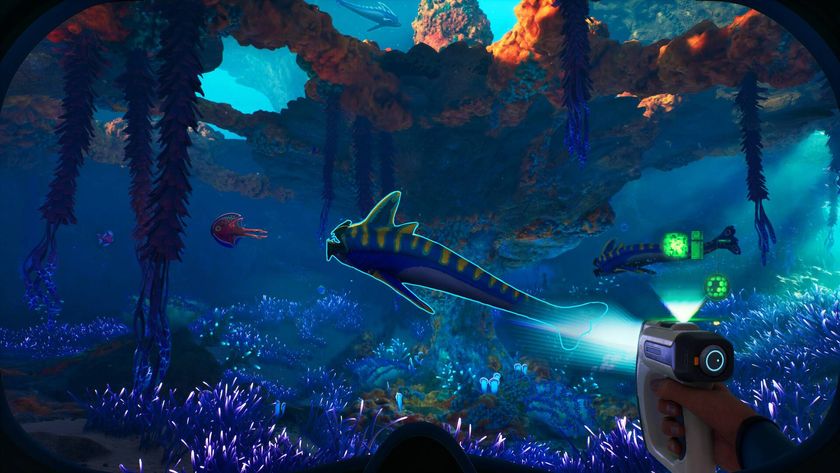
Subnautica 2 devs warn players about "fraudulent links" to a playtest for its upcoming underwater survival game: "Stay safe out there, Subnauts!"
Most Popular







